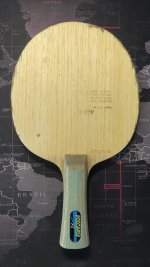This user has no status.
This user has no status.
Active Member
The rule only states: The playing surface may be of any material and shall yield a uniform bounce of about 23cm when a standard ball is dropped on to it from a height of 30cm.
There are various thicknesses ranging from 15-25mm thickness. I've played with various thickness and I can feel that the thicker the table, the more solid and uniform the bounces on the table... but I dont understand why. I thought if 23cm height bounce is achieved, then the table should feel the same no matter what the thickness is.
Can experts here explain why? Thanks.
There are various thicknesses ranging from 15-25mm thickness. I've played with various thickness and I can feel that the thicker the table, the more solid and uniform the bounces on the table... but I dont understand why. I thought if 23cm height bounce is achieved, then the table should feel the same no matter what the thickness is.
Can experts here explain why? Thanks.










